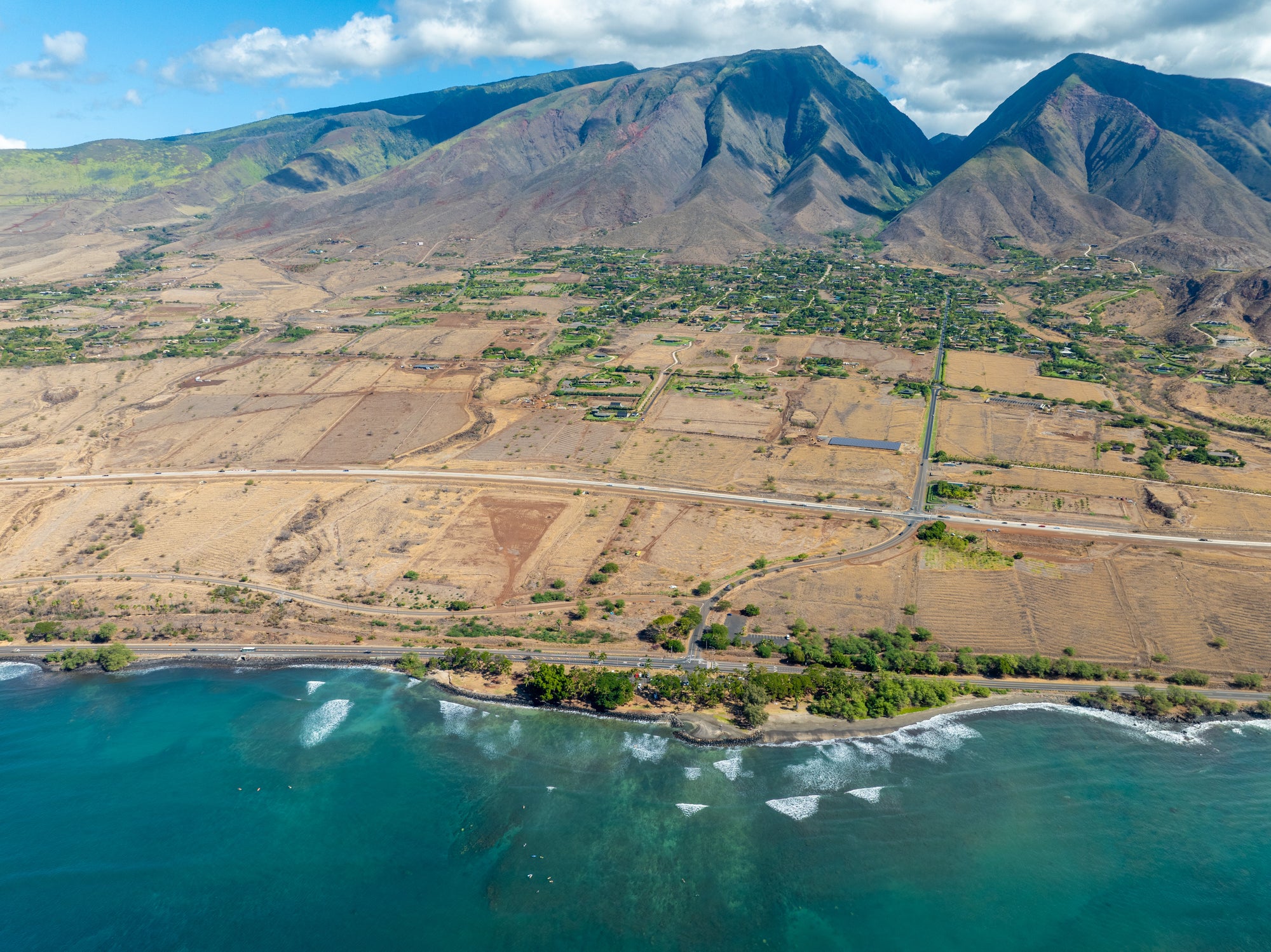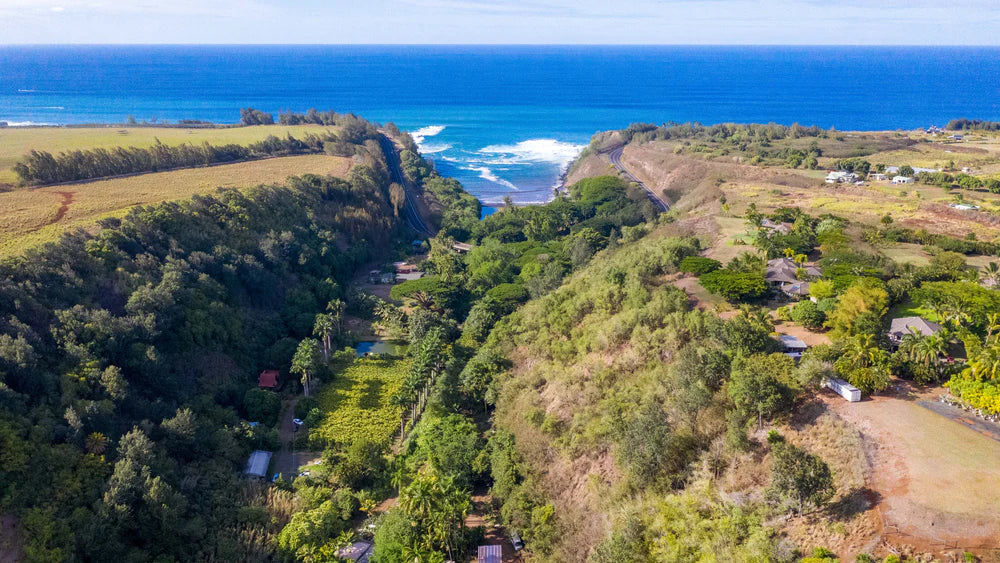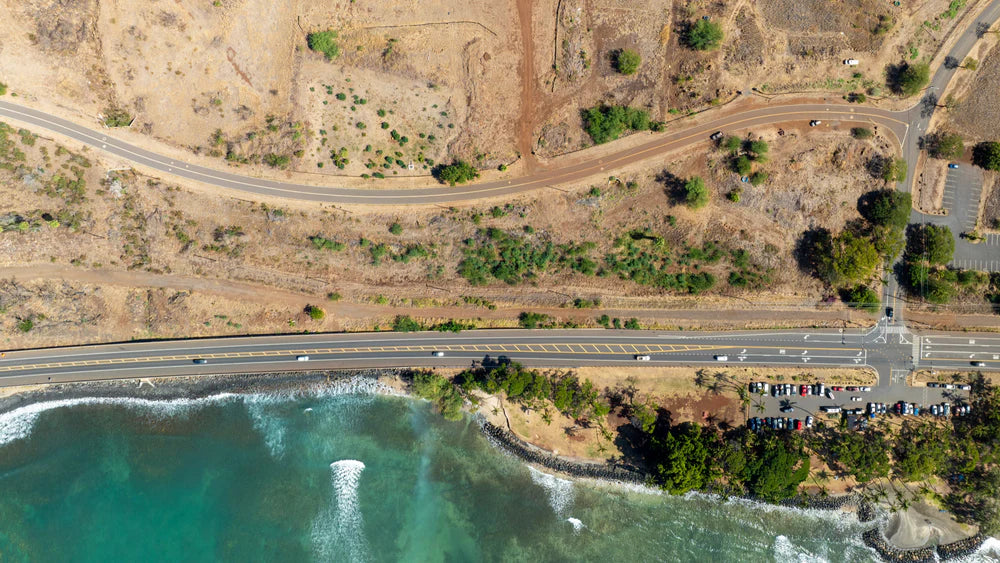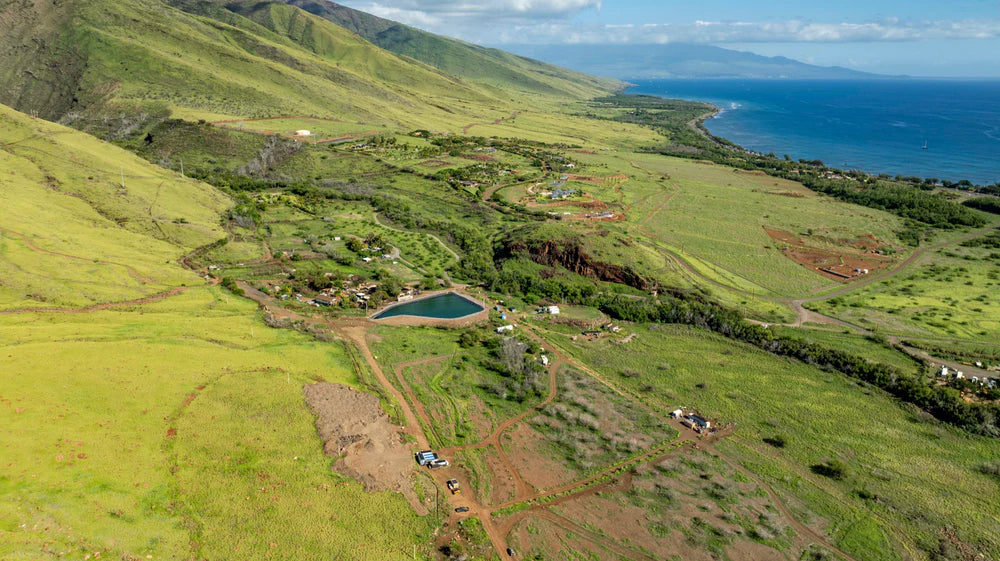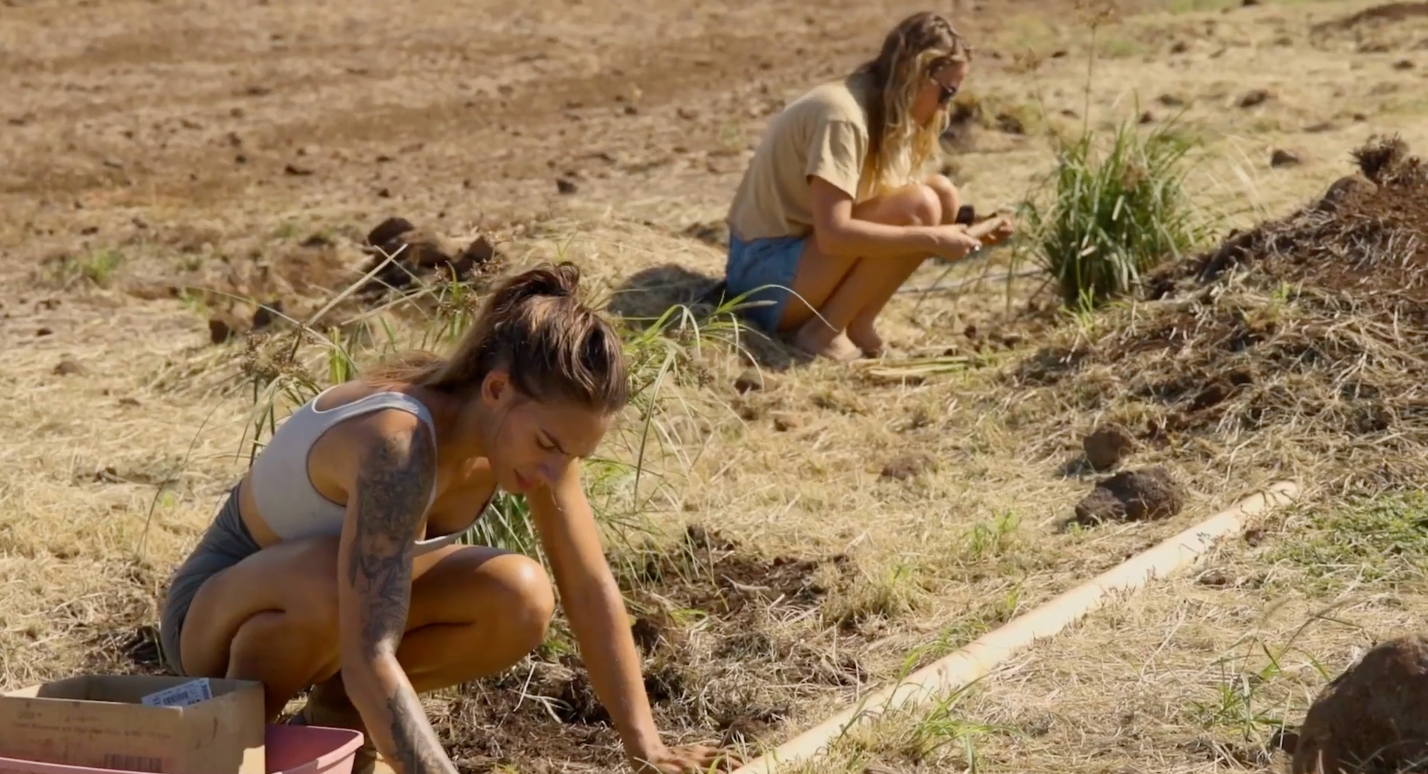Launiupoko Watershed Restoration
This project sits directly above a precious reef system which is home to Olowalu, commonly referred to as Maui’s “Mother Reef” and designated a Mission Blue Hope Spot. It is called the Mother Reef because it holds the oldest coral on the island, which acts as a nursery to replenish reefs across Maui, Lānaʻi, and Molokaʻi.
Sadly, this reef system is under threat due to unmitigated runoff from deforestation and inappropriate development directly above. In Launiupoko, the soil has been left fallow after years of the cane industry overworking the land, creating degraded conditions where invasive grasses have taken root. To mitigate these impacts, Seatrees has partnered with Regenerative Education Centers (REC) to plant native and erosion-resistant plant species to prevent sediment from smothering the reef and to restore and protect the coastal watershed ecosystem belt
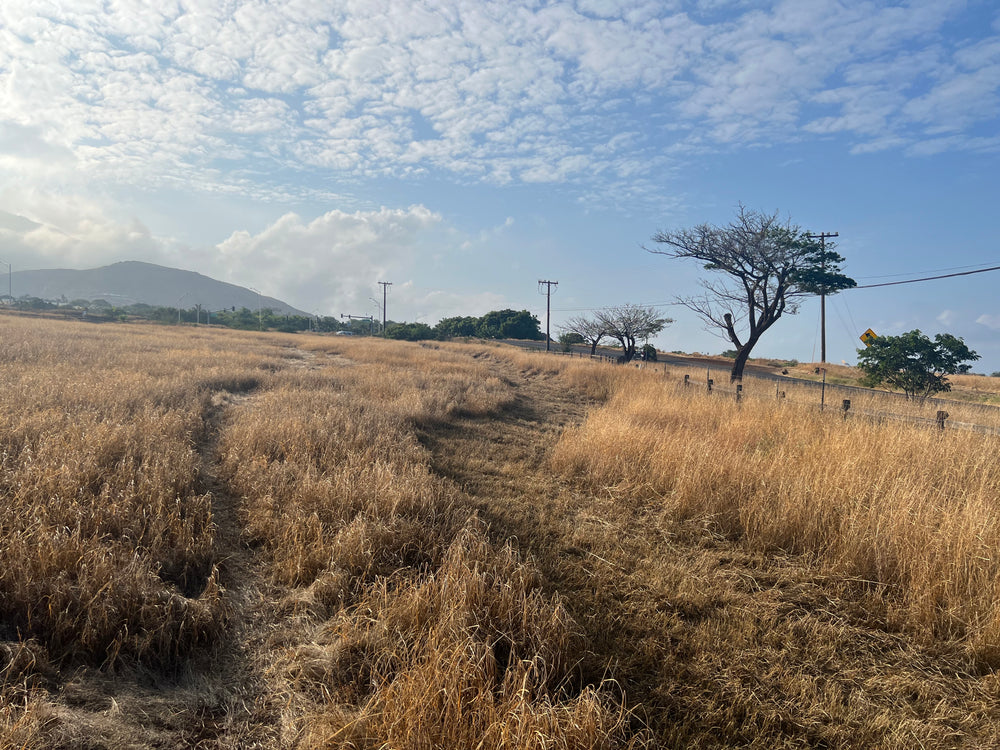
Threats
- Runoff & Sedimentation: Degraded land channels soil and pollutants into the reef, threatening coral health.
- Invasive Species: Fast-growing, flammable grasses outcompete native plants, increase erosion, and create fuel for fires.
- History of Colonization & Land Use: Decades of sugar cane monoculture and land mismanagement left soils exhausted and ecosystems fragmented.
- Water Rights & Infrastructure: Loss of reliable irrigation — worsened after the 2023 fire — has made restoration fragile and slow.
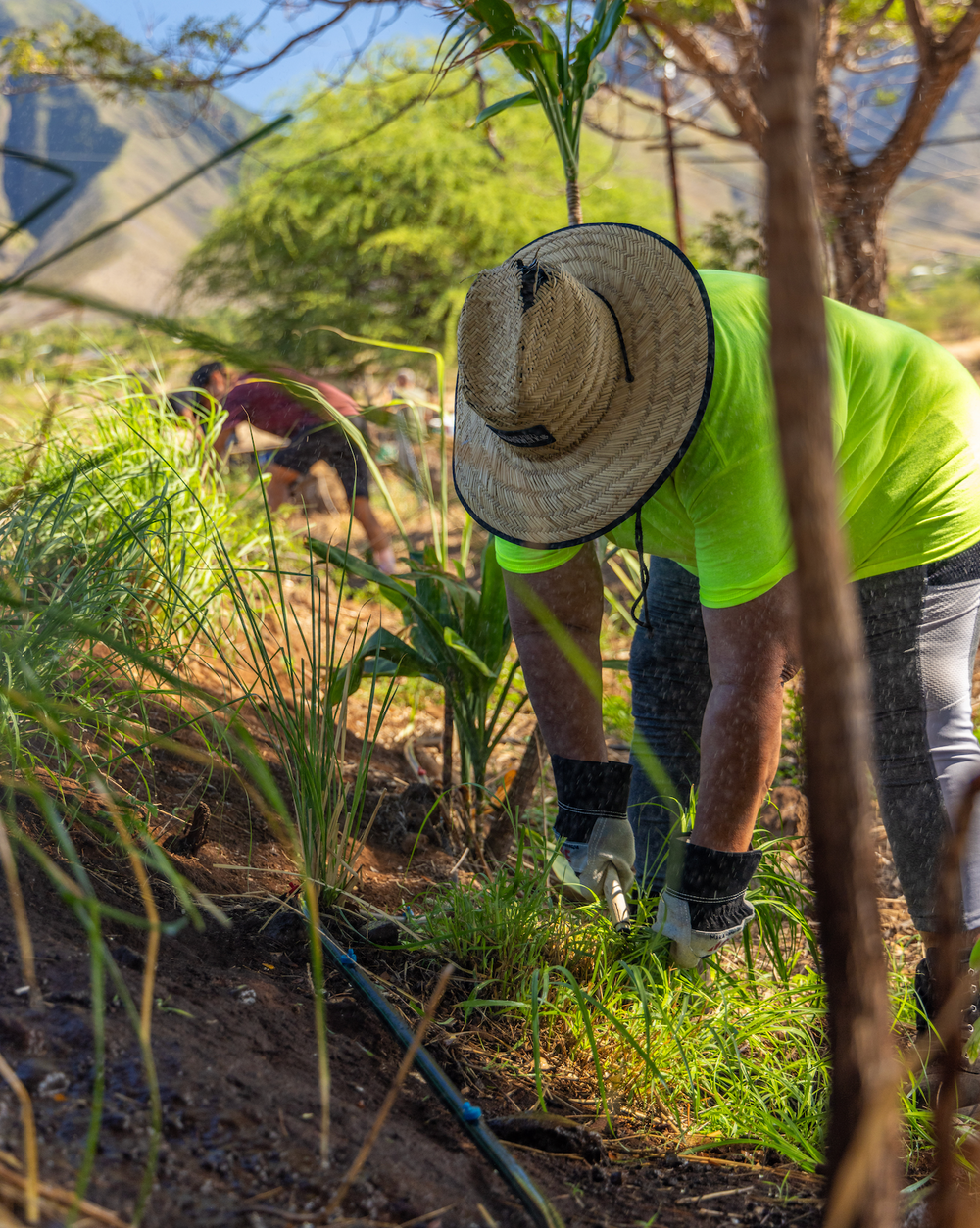
Impacts of These Threats
The combined effects of colonization, land mismanagement, and invasive species have left Launiupoko deeply vulnerable. The influx of flammable grasses has turned the area into a tinderbox, with devastating consequences during drought.
This highlights the Hawaiian value of Mālama ʻĀina — to care for and live in balance with the land. The principle recognizes that when the ʻāina (land) is nurtured, it sustains the people in return. Launiupoko’s restoration is rooted in this practice: re-establishing native plants, healing soils, and restoring balance between community and ecosystem.
The Fire
On August 8, 2023, the Lahaina wildfires swept through Launiupoko, destroying years of restoration progress:
- Roughly 75% of Seatrees plantings on the lower site were lost to flames.
- The farm stand (1,500 sq ft) and water infrastructure were completely destroyed.
- Mature crops, livestock, and fencing were wiped out.
Yet, the fire also revealed a glimmer of resilience: an invasive-grass patch cleared just two weeks earlier created a firebreak that slowed the blaze, protecting surrounding areas. Drone photos dramatically show the difference between cleared and uncleared zones — proof that proactive restoration reduces risks.

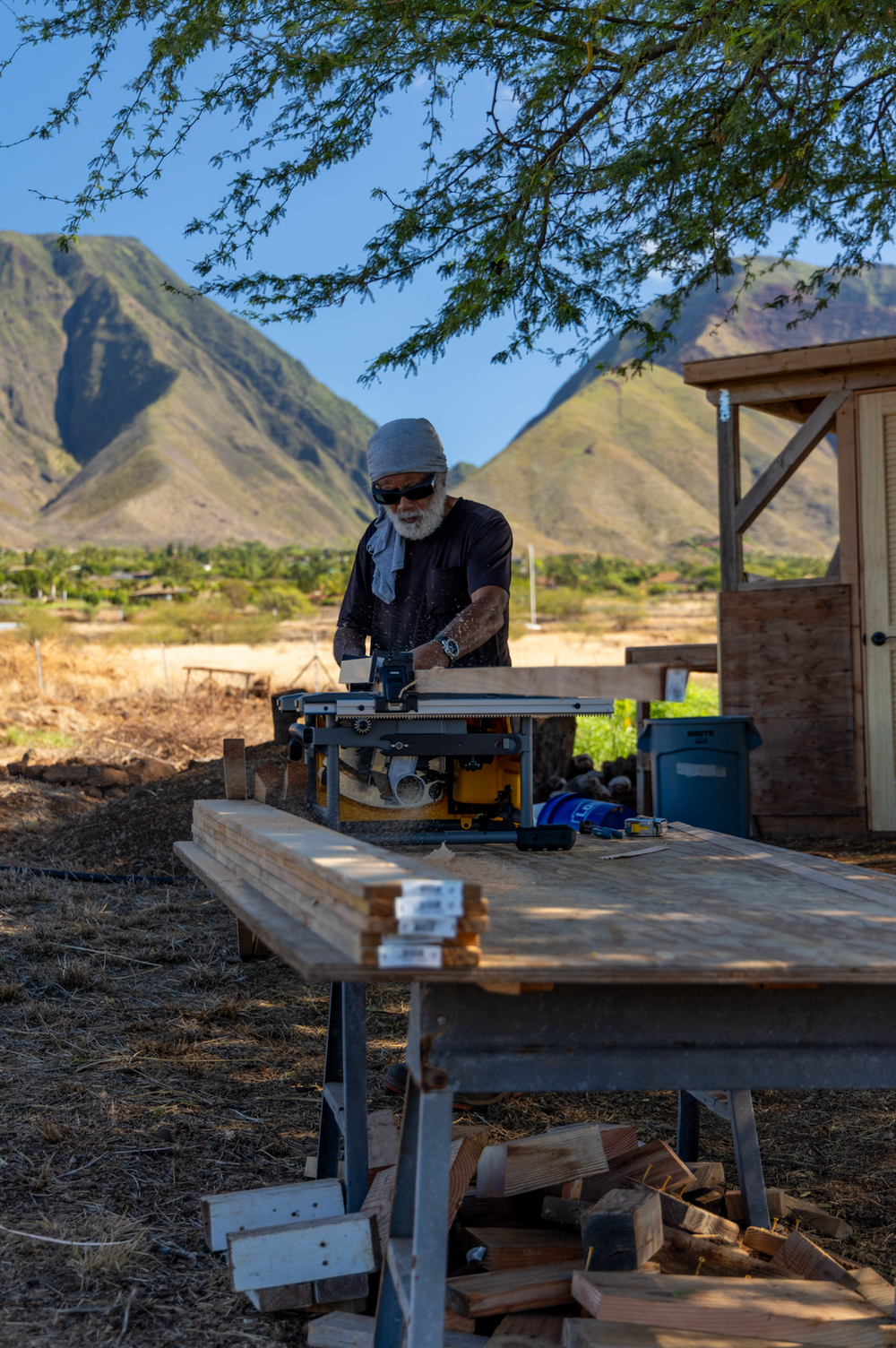
Where to From Here?
- Replanting & Irrigation: Replacing lost plantings, repairing irrigation lines, and restoring 50,000 sq ft of watershed.
- Maui Ecology Center: Transforming Launiupoko into a “Living Outdoor Classroom and Food Forest” — with Hawaiian hale, stone walls, taro patches, aquaponics, beehives, touch tanks, and interpretive signage for both locals and visitors.
- Farm Stand Rebuild: The farm stand is once again up and running, providing fresh food, economic opportunity, and a hub for education.
Together, these steps move Launiupoko beyond recovery, creating a resilient model of ecological restoration, cultural stewardship, and community resilience rooted in Mālama ʻĀina.
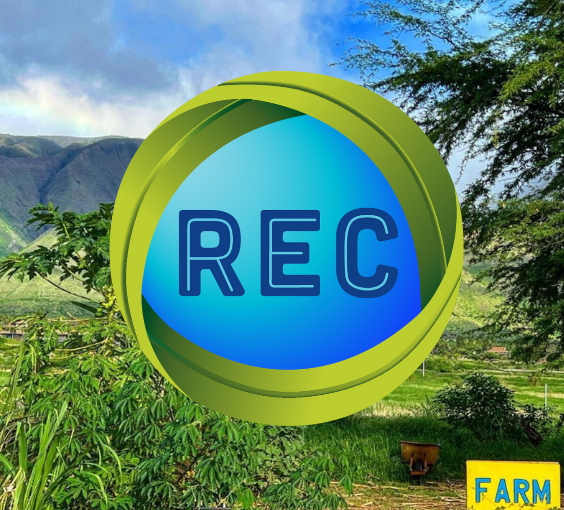
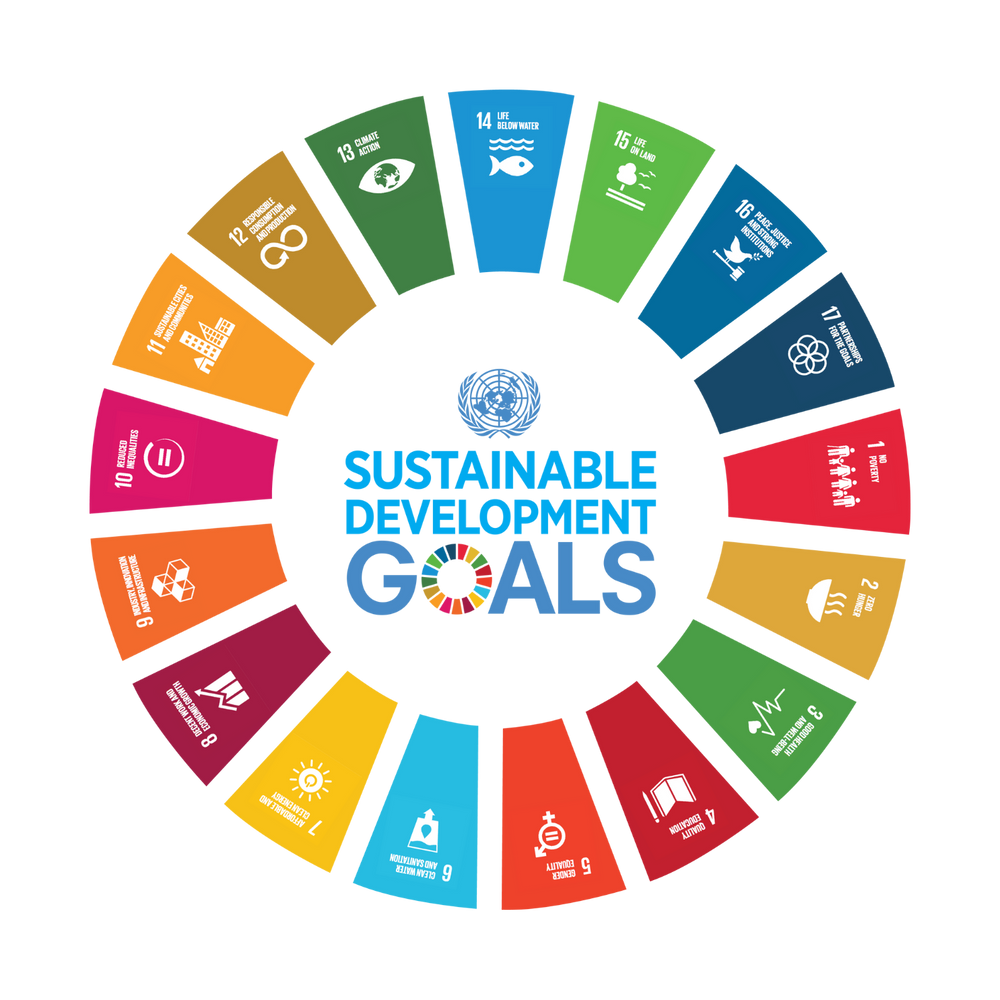
Creating Sustainable Benefits
Our restoration efforts focus on removing trash and invasive species, and growing native plant species in critical areas within the watershed. This then serves the community by providing educational experiences, as a source of organic produce, erosion prevention, and protection for the neighboring coral reefs.
Key Impact Metrics
- Jobs to the local community
- 40,000+ lbs of food grown and given away to the local community
- Educational opportunities to the local community and visiting schools
- Protects critical habitat in the watershed and offshore coral reefs
- Protects vulnerable species
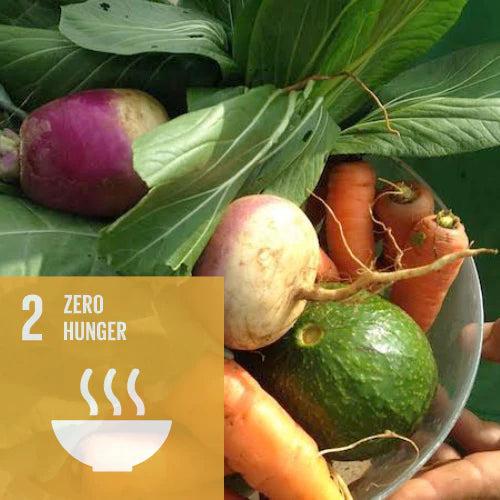
Zero Hunger
Regenerative Education Centers works directly with the local community to develop sustainable agriculture initiatives, which benefit the health of community members as well as the planet.
Approximately 40,000 lbs of food and produce, grown without any fertilizer or pesticides, is given away to the local community through this restoration project.
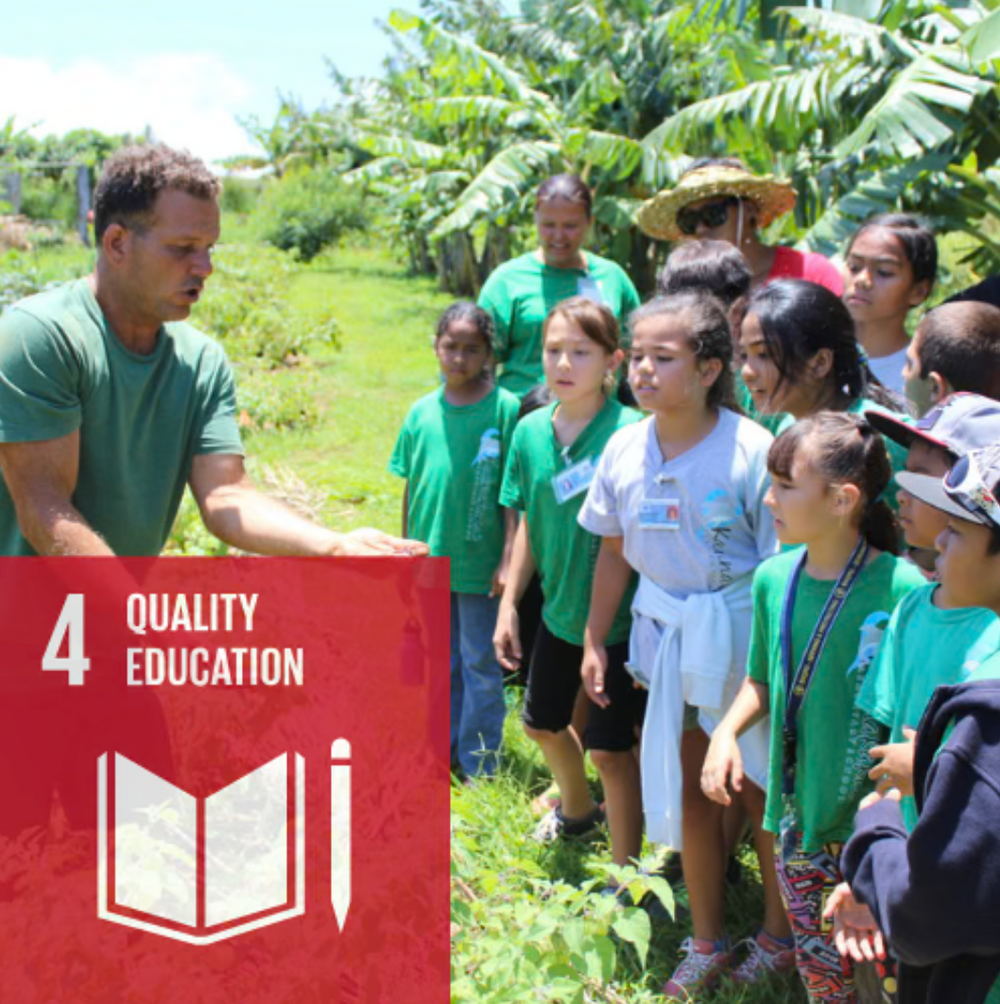
Quality Education
Educating the world and the local community about restoration and regenerative practices is at the heart of of REC’s work. This project creates opportunities for the local community to learn about their local Hawaiian lands, get involved, and see what healthy ecosystems look like.
This project offers educational experiences for students and homeschooled students to visit the restoration project and learn about the regenerative agriculture techniques we are using to heal the land.
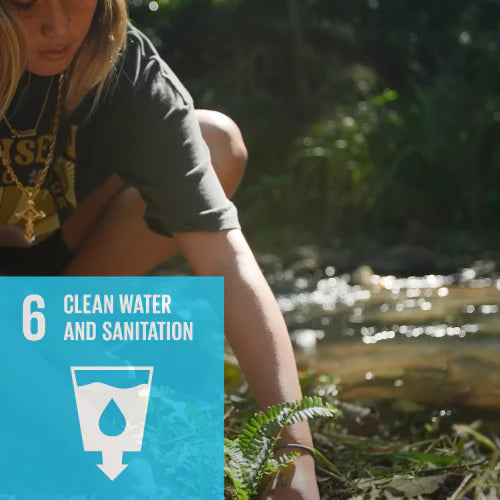
Clean Water
Historic mismanagement and overdevelopment of this watershed have led to significant water quality issues as the streams have become polluted with runoff.
Through our watershed restoration and the implementation of regenerative agriculture methods, we are reducing the soil erosion and sedimentation entering the streams, resulting in direct improvements and protection of the reefs systems that are located at the end of the watershed. Improving this water quality also improves critical habitats for local species, thus protecting the local biodiversity.
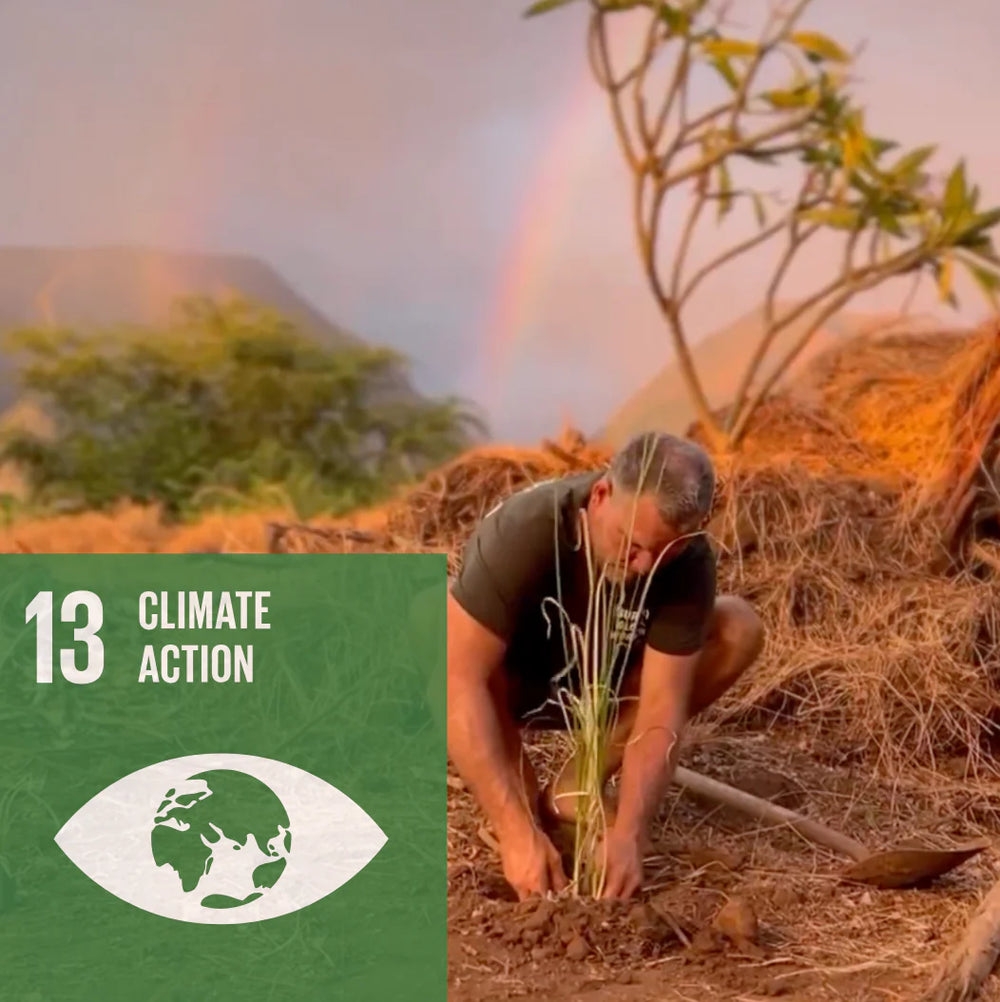
Climate Action
This restoration involves the removal of invasive species from the restoration sites and replanting the area with native and voyaging plants.
Through this process, a significant amount of carbon is sequestered back into the ground by the native plants we are planting back into the watershed.
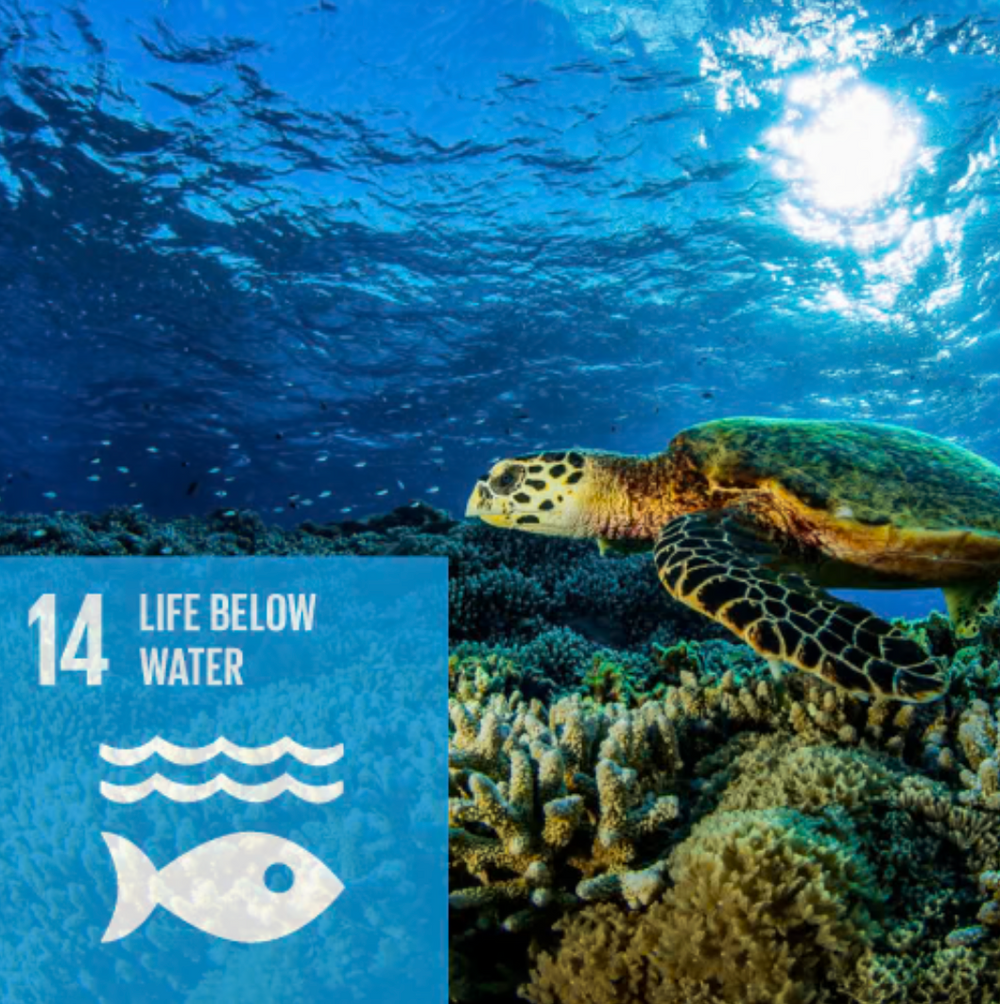
Life Below Water
This project restores and maintains the land by direct restoration of the stream bed and regenerative agricultural practices, which provides protection for the neighboring offshore coral reefs.
Without this watershed acting as a filter to the reefs, the coral reefs would become suffocated by sedimentation runoff and survival rates in both the reefs, and the countless marine species that call these reefs home, would decrease.
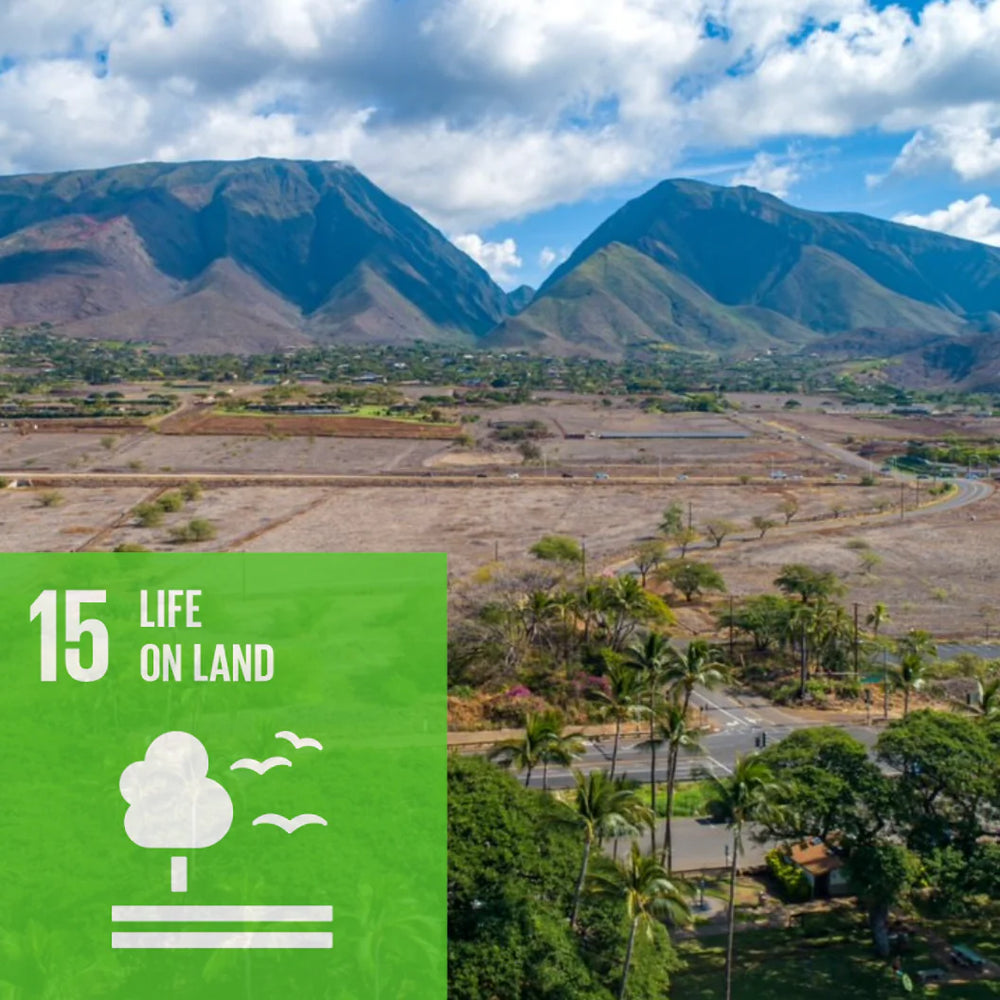
Life on Land
For years, trash has been dumped in the Maliko Gulch and Launiupoko. This restoration effort focuses specifically on removing trash and invasive species (plant and animal), and growing native and voyaging plant species (a mix of trees, shrubs, and grasses) in critical areas within the watershed.
This process holds the land together, reducing soil erosion and sedimentation runoff into the streams. After removing invasive species from the restoration sites, REC replants the area with native and voyaging plants.
